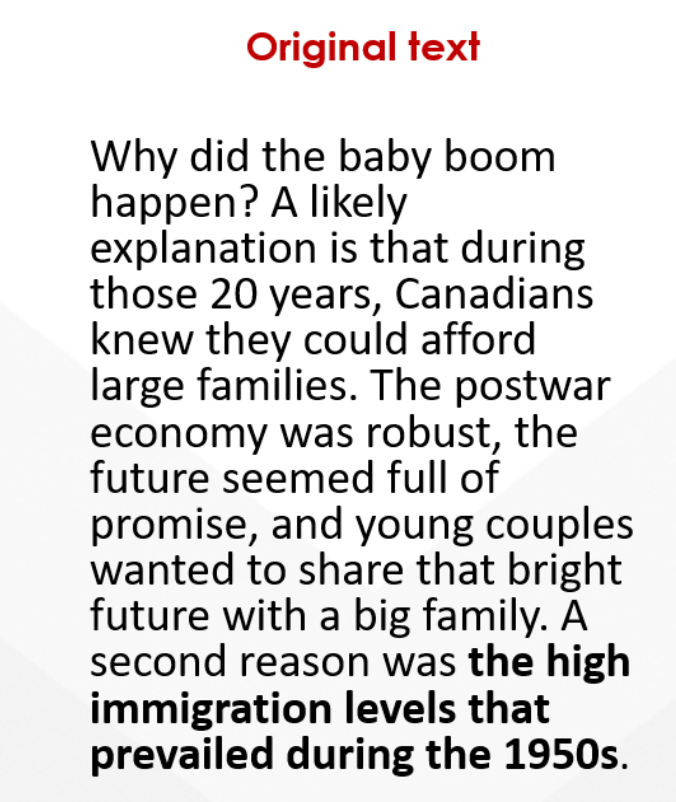28 Quoting
Quoting means taking a part of a source word for word as it is.
How many quotes can I use?
The frequency of quotations varies in different genres of writing. For example, in an English literature paper, direct quotations from a novel or play are often used as the basis for a discussion, while in a business proposal, direct quotes are rare, or not accepted at all.
Generally, it is not recommended to use too many quotes, because extensive quoting gives the impression that you don’t understand your source enough to put it in your own words and that you cannot contribute any of your own thoughts. If you aren’t sure whether you should use direct quotations in a specific course or paper, ask your instructor.
Key Takeaways
Use quotes:
-
To support your idea or to advance your argument
-
To present something you are analyzing, interpreting or commenting on so the reader will understand better to what you are referring (such as a literary passage)
-
If the original language is especially moving, descriptive, historically significant
-
For unique terms or a passage that cannot be paraphrased or summarized adequately without losing or changing its meaning
Source: (The Writing Center, n.d.)
How to quote properly
Quotes can be at the beginning, in the middle, or at the end of a sentence. However, it is a good practice to introduce quotes with some sort of statement that signals to the reader that information is coming that is not your own, such as in the two examples shown.
Examples in APA Style
Short Quotes always require that you enclose them in quotation marks, so the reader knows that these are the EXACT words you took from your source. Not putting quotation marks around a short quote is considered a form of plagiarism.
Example:
One researcher indicates that “the most difficult thing for them was the attitude of their parents” (Crook, 2003, p. 157), while others believe…
Long Quotes are put in a block indented from the remaining text and have no quotation marks.
Example:
A family’s assessment has a powerful influence on how capable teenagers believe they are. In her study, Crook (2003) found:
Their expectations became self-fulfilling prophecies; because their families thought they couldn’t do anything, they didn’t think they could either. After all, if the people who knew them best and presumably loved them most thought they were losers, then the family was probably right. (p. 37)
Can I make changes to a quote?
You may drop words from a quotation, but you must indicate that you did so by inserting three spaced dots called an ellipsis. If you change a quote, for example to make it fit your sentence structure, you must use brackets to do so.
In the example below we omitted a part of the quote, and we indicate this by adding three dots. We also added the word “and” which is put in brackets, because it is not part of the original.
In her study, Crook (2003) found that if teenagers felt that “their families thought they couldn’t do anything, they didn’t think they could either . . . [and] the family was probably right” (p. 37).
Test your understanding
Have a look at the original text below on the left, and then the quotes on the right. All three quotes are examples of plagiarism in various degrees. See if you can spot the error before you click the quote to see the answer and the explanation of the quote as it should be.
 |
|
Source: (Foot & Stoffman, 1996, p. 20)

